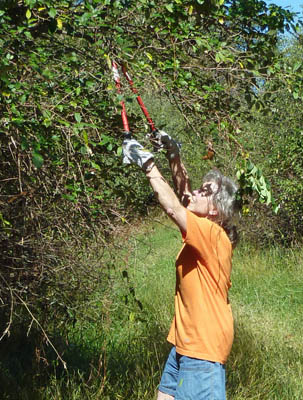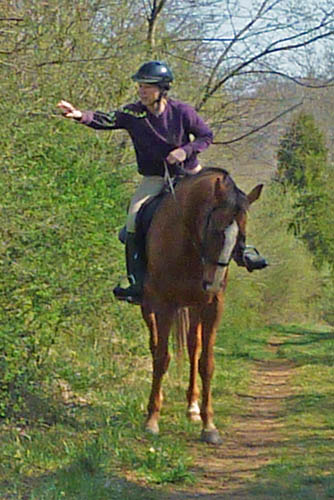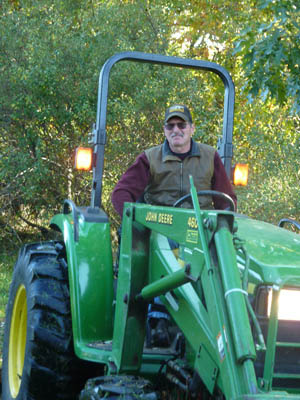A Plea to the Riding Community for Trail Maintenance

|

|
I know if you are a horse owner that there are many demands on your time, and I know that you get tired of turning on your favorite public television show only to hear 10 minutes of fund raising. It always seems like someone is exhorting you to do something, and you can now add me to your already long list.
Let’s face it, people who own and ride horses are a minority group and like other minority groups we need to consider ourselves part of a community. It is right and proper that as a member of that community, we devote some of our time and money to the common needs of our community. There are many different things that an equestrian can do to “give back.” We can support organizations that are involved in mentoring young riders, horse rescue, horse placement, horse showing, political action promoting equestrian interests, and so on. For trail riders such as myself, participation in trail maintenance in public riding areas helps everyone using the area. With governmental cutbacks, if we do not care for the public trails we use, who will?

|
A group of people can get a lot accomplished and make riding in the area much more pleasurable for everyone. However, it is not just a question of pleasure. It is also a question of safety. Riders or horses can be injured by hazards along a trail. Trails should be wide enough so that they are accessible to emergency vehicles in the event of an accident, medical emergency or fire. It is said that ideally a trail should have about a ten foot by ten foot clearance to allow for the height of a horse and rider and also to allow groups to safely pass each other. Hazards to a horse’s feet, such as holes or vines, should be taken care of. Limbs, branches, vines and sticker bushes should be cut back. Brush at intersections should be cleared to allow riders to see others coming up the intersecting path. Yes, this is a lot of work, and it is often amazing that you can work on a short stretch for hours and the next year you need to do it all over again. You tend to notice things that need to be done and fail to notice those things that have been done.

|
Swampy areas are another management problem along trails. These occur in low lying areas that receive water runoff. Horse’s feet create divots in the ground that fill with water which aggravates the problem. These areas can be addressed by rerouting the trail to higher ground or by cutting trenches along the side of the trail. An uphill trench parallel to the trail can collect the runoff coming down the hill and route it through a plastic drainpipe buried sufficiently under the trail. It is a good idea if possible to cover the pipe with stone because the weight of a horse’s leg is adequate to collapse inadequately protected corrugated plastic drain pipe. On the other side of the trail a parallel trench and a run off trench downhill from the path can then pull the collected water off of the low area and toward any natural stream or collecting point. Laying stone or crusher run in wet areas is also helpful. However, remember that horses do not like to walk on particularly coarse stone and if used it should be covered with a finer layer. It is also possible to build boardwalks from treated lumber across swampy areas. Many horses bulk at walking over these. Boardwalks disturb the natural appearance of an area, can become slippery and also require continuing maintenance. In short, I do not particularly favor them.
The equipment helpful in maintaining trails:
In some parks the agency managing the site will mow, but in others it is the volunteers. If your group is doing the mowing, think about doing it the day before routine maintenance. That will help your other volunteers who are trimming along the trails. It is good to have someone in your group with a good sized tractor, mower deck and trailer. Wider trails allow riders to avoid trampling ground cover and stripping the trail bare. Mowing trails not only aids access but keeps tick populations down. In this era of Lyme disease preventing humans, horses and dogs from picking up ticks is very important.
It is useful to have a means of reaching less accessible areas of the park with your equipment. Be certain to have permission of the park authorities if motorized vehicles are usually not allowed, and be watchful of other park users who may not be expecting you.
These are your basic tools when doing trail maintenance and can be used on foot, from the open bed of a truck or even on horseback.
These are necessary to get rid of those larger dead trees that fall down on trails. However, some parks forbid the use of gas powered ones.
For trail maintenance these are the best things since sliced bread. You not only can cut low branches but also reach into large, hard to get to bushes and cut them off at the trunk!
They may be useful in some places, but you can injure yourself easily with these.
You might find some applications for these.
Good leadership, planning, publicity, food, water, communication, good fellowship and acknowledgement. They may be intangibles, but they are no less important than the tools when working with a group of people doing trail maintenance. The possibility of injury to participants should be considered, and they should be registered and waivers signed if this is felt to be necessary. The group leader should have participants indicate where they will be working on a map and have a first aid kit. Having cell phone numbers might be useful if it becomes necessary to contact scattered participates for some reason, such as a medical emergency.
I have one last thing to say. I often observe that the people giving up their day of riding and working on the trails are among the more senior, even white haired, members of our riding community, while the other people riding and enjoying their horses in the park that day are the younger folk. So, let’s see you “kids” out there also. You were not given a free pass and, not that I am complaining I did volunteer after all, but my old bones and muscles do hurt and feel tired after so many hours of doing this. Our maintenance crews need some new, young blood and enthusiasm. So, please, show up and support your local riding trail. We would love to have you.
Yours truly,